All is not well in “Paradise”. It’s wet. Yesterday was showery. This wasn’t a problem, as we were out on a tour all day. We were fortunate that it mostly rained while we were in the car between attractions. Today, however, it has been continuous heavy rain.
As we had arrived in the dark, Dennis had no real idea how Mauritius looked. To remedy this we booked a tour, which would take us around the main attractions in the southern part of the island and to get a feel for the country. Most of the day was on narrow, winding, hilly roads, often flanked by sugar cane.
Our first stop was to see the two giant statues of the God Shiva (108 feet tall, built in 2007) and Goddess, Durga (built in 2017). The statues are erected next to a holy lake and temple and statues of other gods line the lake. Up to 700,000 Hindus make a pilgrimage here once a year.
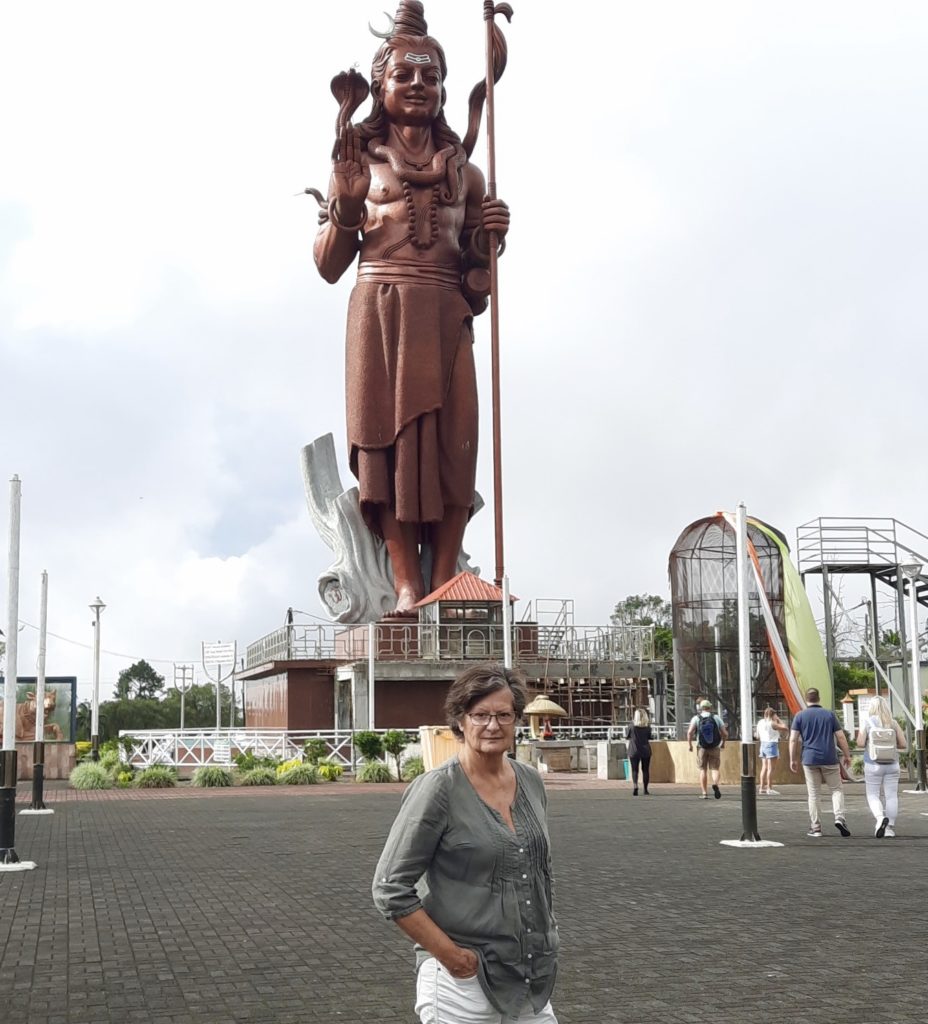
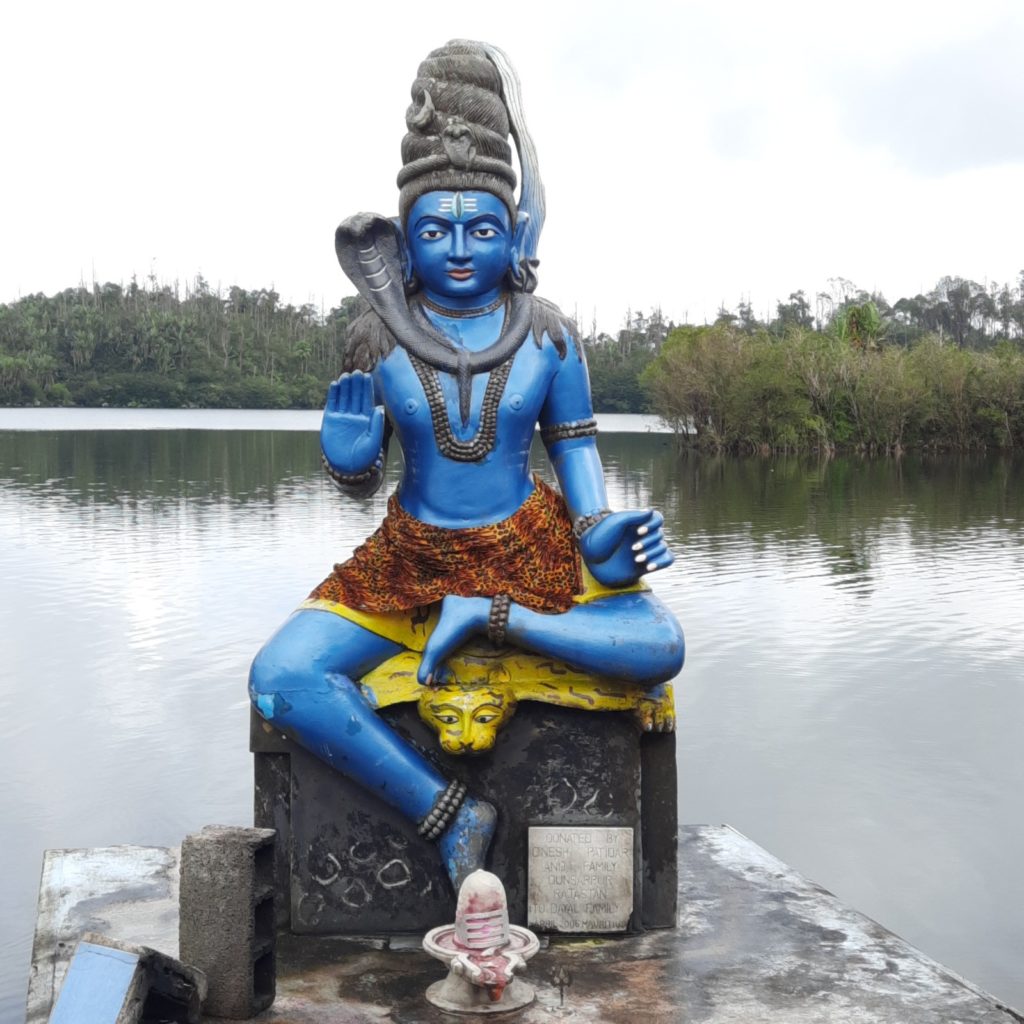
Mauritius is a volcanic island. Some craters contain lakes, but we peered over the edge of the crater at Curepipe which is lined with tropical vegetation and supposedly, (hopefully), dormant. Curepipe is the second largest town on the island and the retail capital.
Retail therapy.
Mauritius manufactures all sorts of clothing. The yarns and materials are all imported. As part of our tour we were taken to various locations where the best efforts were made to extract tourist dollars from us. A cashmere factory, rum tasting, diamond factory and a ship model workshop, with accompanying retail area.
They were moderately successful as I purchased a silk scarf and Dennis bought me a lovely diamond ring. To avoid tax, there is a complicated procedure whereby we have to collect the ring on departure from the airport. I only hope this works!
It was pouring when we left Curepipe, but fortunately once we reached the Black River Gorge had cleared and we were able to get a reasonable view over the the surrounding mountains and waterfall.
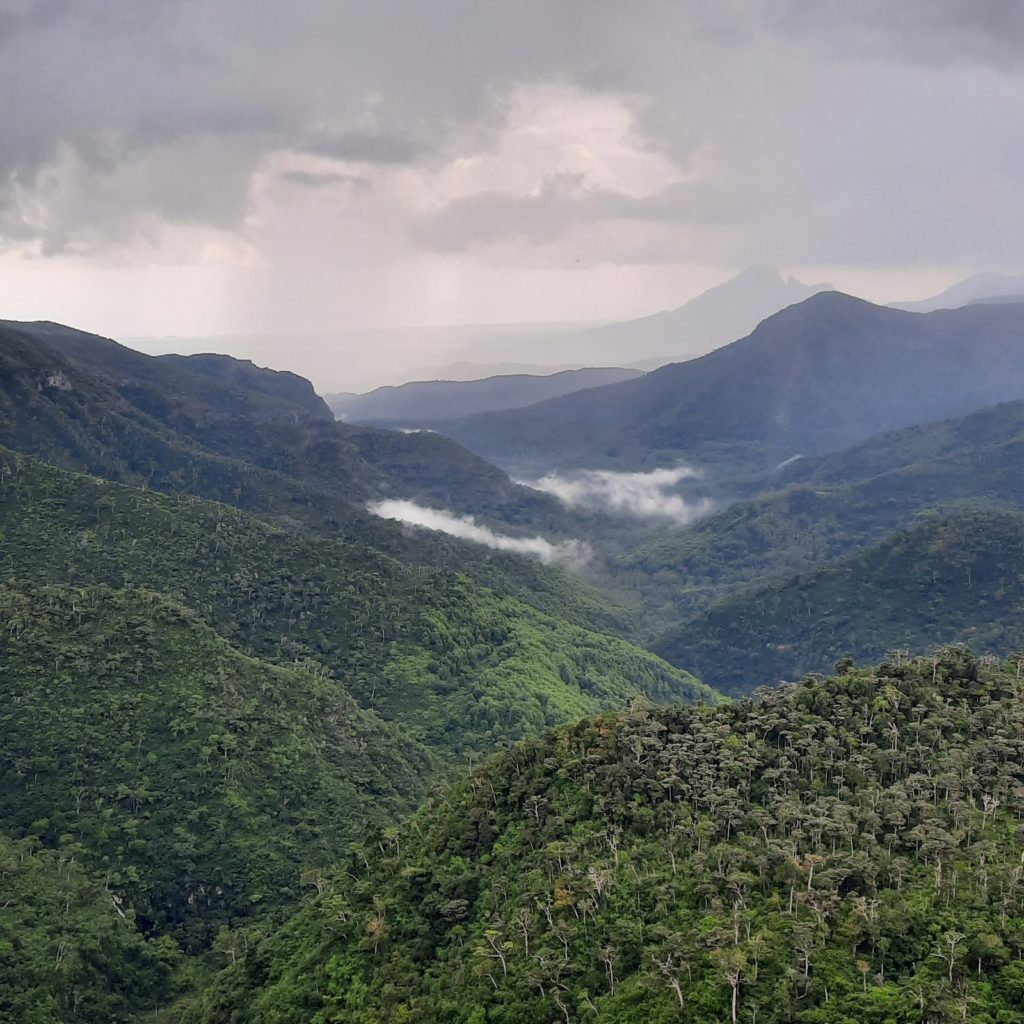
The area is frequented by a group of monkeys. Fed by the tourists they are quite tame and cheeky. Not native. Imports from Madagascar. The most famous native species, the dodo, is sadly extinct and has been so for hundreds of years. The Dutch stripped the forests, destroying their habitat and introduced predators, such as the ship rat, which preyed on their nests.
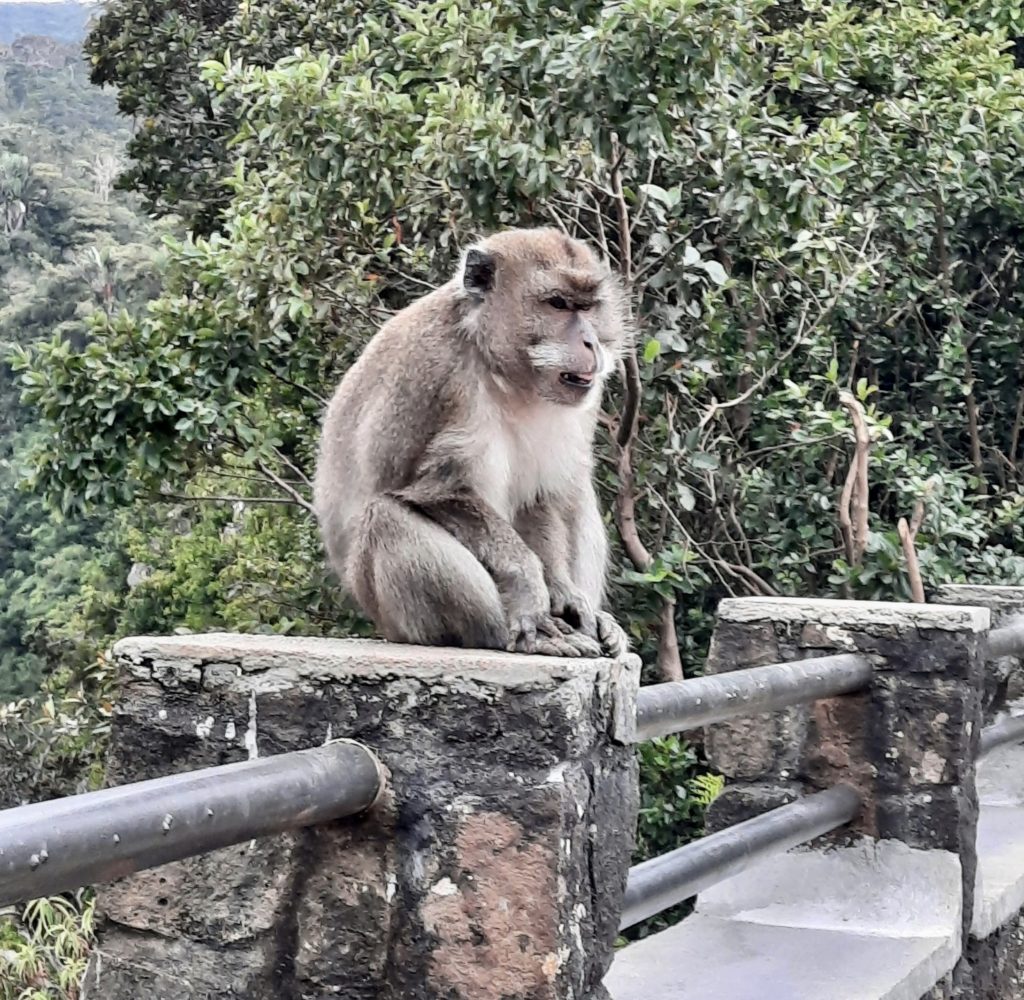
Lunch was at a rum distillery. A very pretty location with lovely gardens. As the sugar cane is not ripe at the moment, maintenance was in progress and no distilling was taking place. The rum industry seems to have become very sophisticated. A bit like craft beer. A whole variety of differing flavours, attractive labeling and shaped bottles.
I wasn’t expecting much from lunch, but the restaurant was very smart and despite a menu having been chosen for us, it was an excellent lunch. It even included a cocktail of our choice.
Our final experience for the day was a visit to the Charmarel coloured earths. An unusual geological feature. Rolling dunes of seven differing colours.
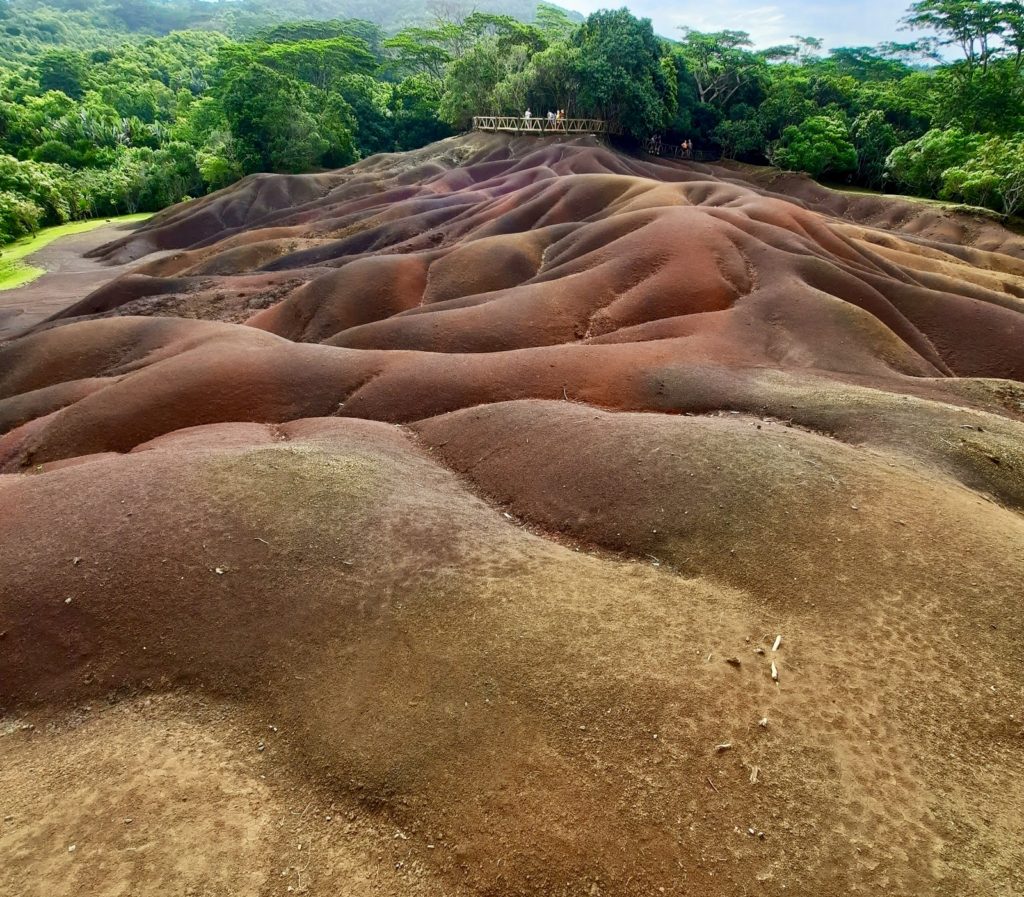
Nearby there was also an enclosure with giant tortoise. Again not native, but an import from the nearby Seychelles.
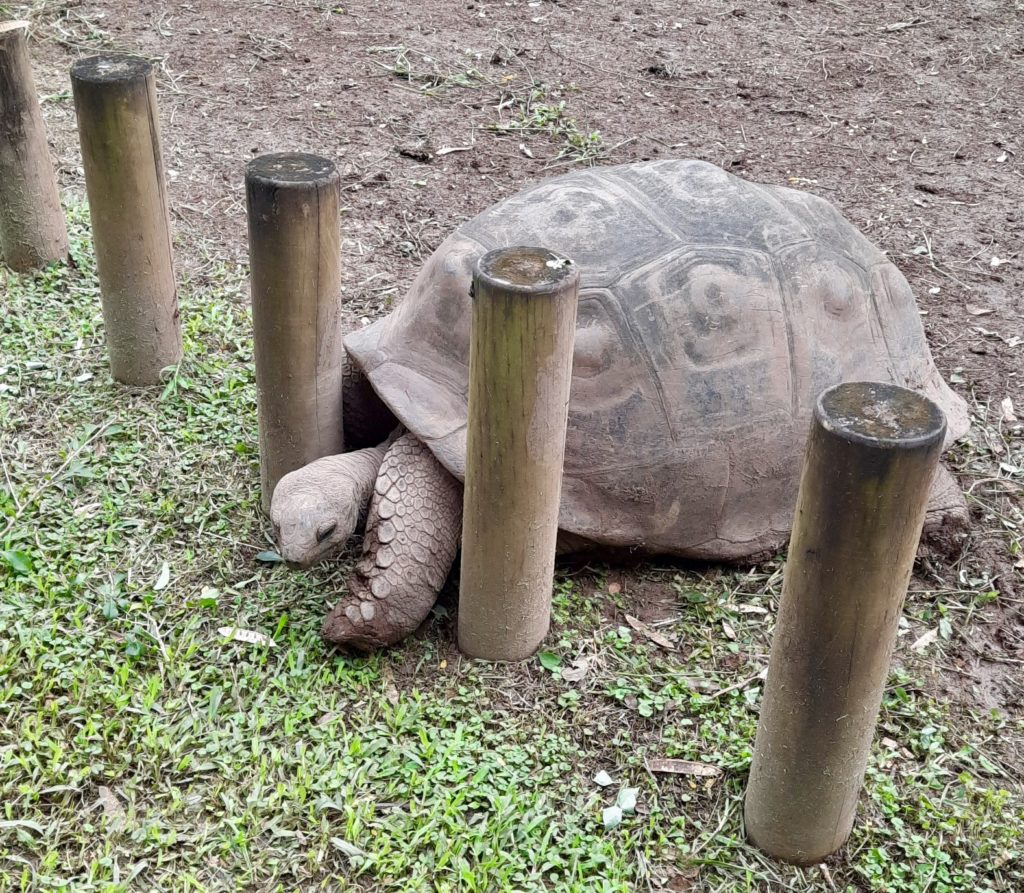
The Landys
Meanwhile, back in Durban, Adam has been to visit OneLogix, the shipping agent who will handle the procedures for us when the Leonidio arrives in Durban. It appears the costs my be more than we originally expected. Aren’t they always!
Views: 174
